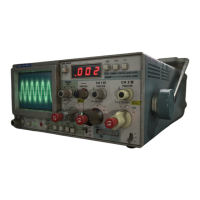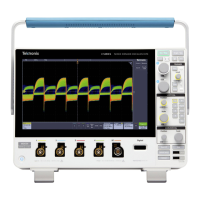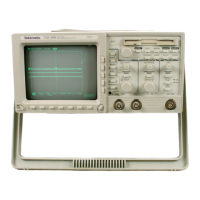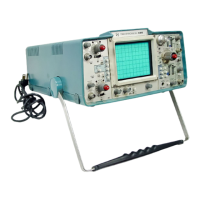Section
4-314
Service
MAINTENANCE
This section contains information for performing
preventive maintenance, troubleshooting and corrective
maintenance.
PREVENTIVE MAINTENANCE
Preventive maintenance consists of cleaning and visual
inspection. Preventive maintenance, performed on a
regular basis, may prevent instrument breakdown and will
ensure the reliability of the instrument. The severity of the
environment in which the instrument is used determines
the frequency of maintenance. A convenient time to
perform preventive maintenance is preceding recalibra-
tion.
Cleaning
The 314 should be cleaned as often as operating
conditions require. Accumulation of dirt in the instrument
can cause overheating and component breakdown. Dirt
on components acts as an insulating blanket and prevents
efficient heat dissipation. Dirt also provides an electrical
conduction path that may result in instrument failure. The
cabinet reduces the amount of dust reaching the interior.
Operating the instrument without the cabinet in place
necessitates more frequent cleaning.
7
Avoid the use of chemical cleaning agents that might
damage the plastics used in the instrument. In
particular, avoid chemicals that contain benzene,
toluene, xylene, acetone, or similar solvents.
Exterior.
Loose dust accumulated on the outside of the
314 can be removed with a soft cloth or small brush. The
brush is particularly useful for dislodging dirt on and
around the front panel controls. Dirt that remains can be
removed with a soft cloth dampened with a mild detergent
and water solution. Abrasive cleaners should not be used.
Interior.
Dust in the interior should be removed oc-
casionally due to its electrical conductivity under high-
humidity conditions. The best way to clean the interior is
to blow off the accumulated dust with dry, low-pressure
air. Remove any remaining dirt with a soft brush or a cloth
dampened with a mild detergent and water solution. A
cotton-tipped applicator is useful for cleaning in narrow
spaces.
Visual Inspection
The 314 should be inspected occasionally for such
defects as broken connections, improperly seated
semiconductors, damaged circuit boards, and heat-
damaged parts.
The corrective procedure for most visible defects is
obvious. However, particular care must be taken if heat-
damaged components are found. Overheating usually
indicates other trouble in the instrument. Therefore, it is
important that the cause of overheating be corrected to
prevent recurrence of the damage.
Semiconductor Checks
Periodic checks of the semiconductors in the 314 are
not recommended. The best check of semiconductor
performance is actual operation in the instrument. More
details on checking semiconductor operation are given
under troubleshooting.
Recalibration
To ensure accurate measurments, check the calibra-
tion of the instrument after each 1000 hours of operation,
or every 6 months if used infrequently. In addition,
replacement of components may necessitate recalibration
of the affected circuits. The Adjustment Procedure can
also be helpful in localizing some troubles in the instru-
ment. In some cases, minor troubles may be revealed or
corrected by readjustment.
TROUBLESHOOTING
The following information is provided to facilitate
troubleshooting of the314. Information contained in other
sections of the manual should be used with the following
information to aid in locating defective components. An
understanding of circuit operation (see the Theory of
Operation section) is very helpful in locating troubles.
Troubleshooting Equipment
The following equipment is useful for troubleshooting
the 314:
1. A dynamic semiconductor tester such as the
Tektronix 577-177-178 Curve Tracer System, a Tektronix
576 Curve Tracer, a
7CTlN Curve Tracer plug-in unit and
a 7000-Series Oscilloscope system, or a 5CTlN Curve
Tracer plug-in unit and a 5000-Series Oscilloscope.
2. A multimeter having at least 10 megohm input
resistance; dc voltage range, 0 to 2000 volts; and an
ohmmeter. Accuracy on the dc voltage scale should be
within 2% of full scale.
3. A test oscilloscope with a frequency response of dc
to 10 megahertz; deflection factors from 1 mV/Div to
10 V/Div. A lox, 10 megohm voltage probe should be used
to reduce circuit loading in high-impedance circuits.
Troubleshooting Chart
Fig. 4-1 is a guide for locating a defective circuit. Start at
the top of the chart and perform the checks given on the
left side of the page until a step is found that does not
produce the desired results. Further checks, or the circuit
in which the trouble is probably located, are listed to the
right of each step. This chart does not include checks for
all possible defects.
After the trouble area has been located, locate the
defective component, using one or more of the
procedures following this chart.

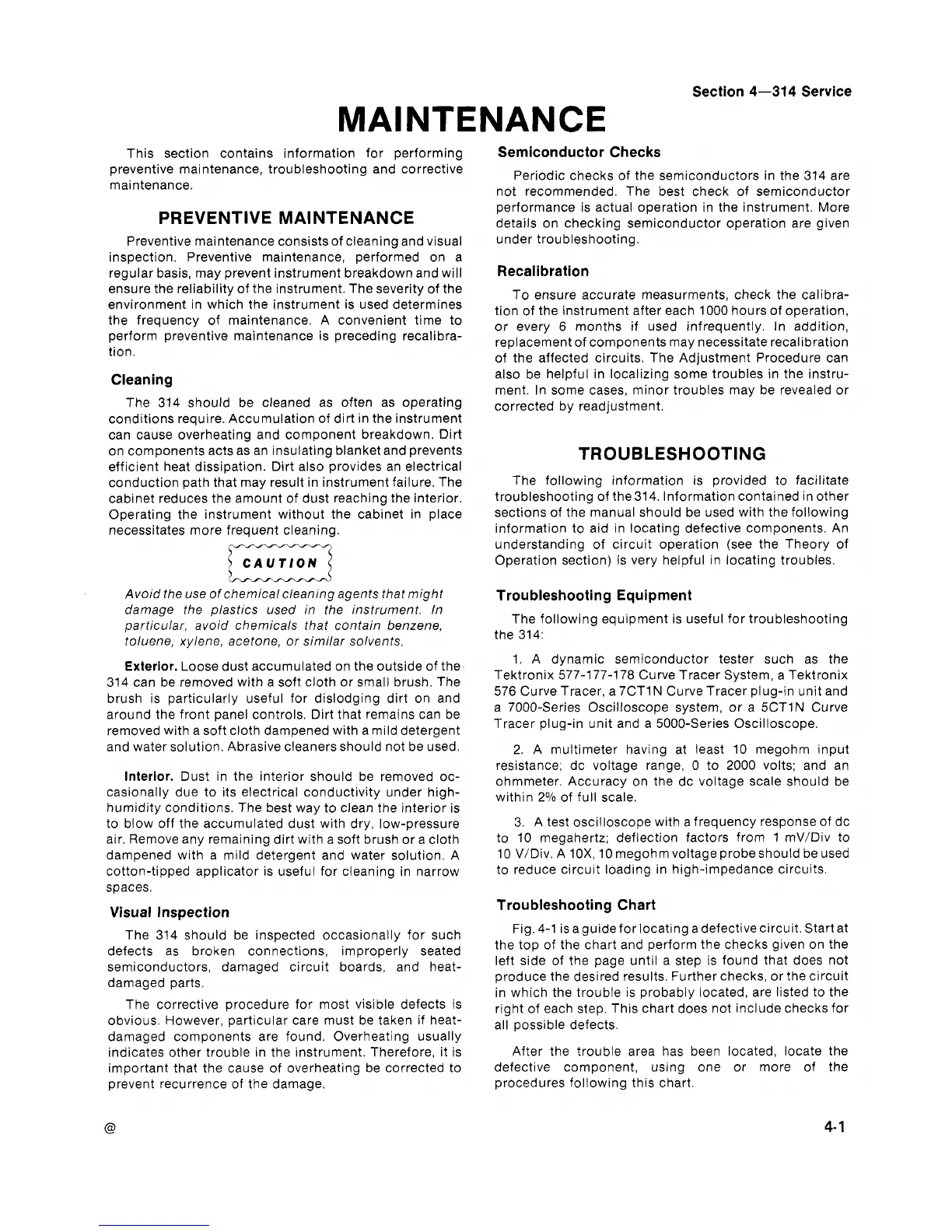